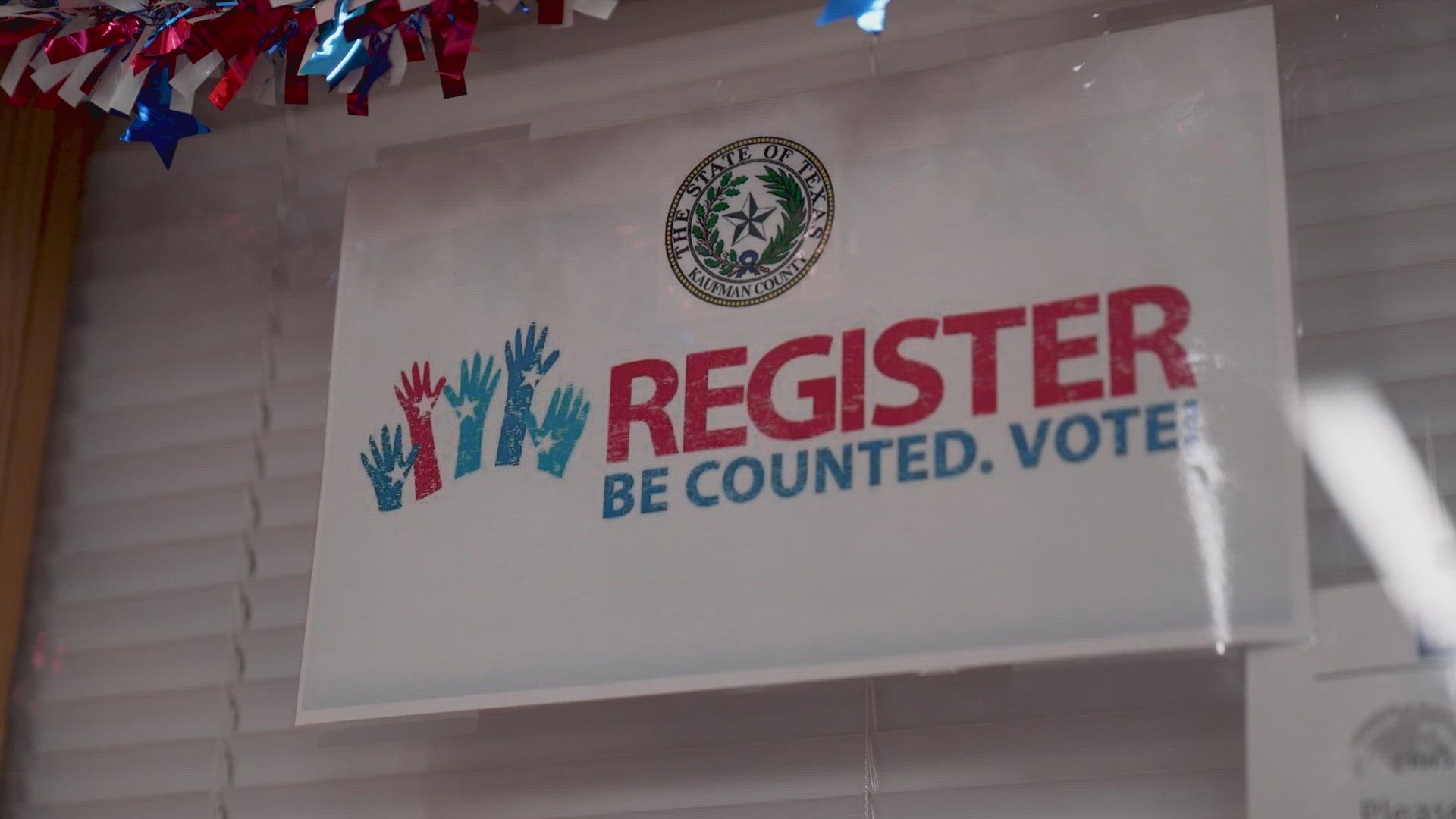DALLAS — Dallas-Fort Worth has gained over 1 million registered voters since 2016, with the most rapid growth taking hold in the counties surrounding Dallas and Fort Worth, data shows.
As the region welcomes new residents at a seemingly ever-increasing pace, data shows that many newly arrived North Texans are registering to vote. The numbers are staggering: In Rockwall County, the number of registered voters increased by nearly 50% over the last two presidential election cycles.
In Kaufman County, the number of registered voters increased by 32% since 2020, which amounts to 26,000 more voters heading to the polls this November.
According to Kaufman County Elections Administrator Tandi Smith, the county doubled its number of voting machines ahead of the 2024 Presidential election.
"More people are moving to Texas," Smith said. "When your community is growing, you have to grow too."
Overall, DFW’s growth in voter registrations matches that of the rest of the state, data from the Texas Secretary of State shows. A record 18.6 million Texans were registered to vote this year, growing 10% compared with 2020. In DFW, the region saw an 11% growth in voter registration, about 4.9 million DFW residents are eligible to cast a ballot in November.
“The DFW metroplex is a really dynamic region and you’re seeing a ton of growth in that region and it's not necessarily taking place in the urban core,” Josh Blank, research director for the UT Texas Politics Project, said.
The growth, while notable, likely won’t favor one party over another, Blank said.
“Politics in the state is complex and competitive and an increase in registration doesn't in and of itself mean that one party or the other overwhelmingly benefits,” Blank said.
That’s partly because while Democrats have been able to generate record turnout since Donald Trump was elected in 2016, the same is true for Republicans. However, a threat to Republican voting margins could come from urban parts of the state, Blank said.
As a result, Republican state officials have recently targeted voter registration efforts in urban counties. Attorney General Ken Paxton sued Travis and Bexar counties in September to stop voter registration efforts.
“There’s a concern there because Republicans have been losing increasingly large numbers of votes,” Blank said. “The fear for Republicans is that if the number of registered voters increases dramatically, it could cut into their margins in a significant way, even if it doesn’t necessarily put anybody at risk of losing an election, it could make for a much closer race”
The dramatic growth in Dallas-Fort Worth registered voters will help maintain the region’s status as a top destination for candidates running in statewide races, Blank said. However, it also speaks to the changing demographics and identity of Texas, which is becoming more urban and less rural. That change will likely make political contests more competitive over time, Blank said.
The rate of voter registration in DFW and across the state took a dramatic turn upwards in 2012, data from the Secretary of State shows.
Since 2012, the DFW metroplex has gained nearly 1.5 million new registered voters. The increase has been particularly sharp in the region’s more rural counties.
The increased growth can be attributed to several factors, Blank said. Barack Obama’s reelection campaign likely galvanized voters of color in DFW starting in 2012, he said. Then in 2016, Donald Trump became a boon for voter registration efforts among both Democrats and Republicans.
Time will tell if increased registration and competitive campaigning will result in higher turnout in DFW and across the state, Blank said. So far, early voting turnout looks high in several North Texas counties.
“I think we need to wait a few more days to see whether this looks like another really high turnout election in Texas or whether this looks more like a regression to the mean,” Blank said.
Texas is a traditionally low-turnout state, ranking lower than most states for voter participation. Blank attributes the state’s low turnout primarily to demographics, saying Texans tend to be younger and poorer than other states' electorate. Older, richer people tend to be more reliable voters, Blank said.
“That means that there's a lot of room to grow in Texas,” Blank said.
As Trump has become a dominant force in Republican politics, Democrats are responding by investing more money and effort in Texas, Blank said. But as the state becomes more competitive, Republicans are also redoubling their focus on Texas.
“I think these increased registration numbers are in a lot of ways a reflection of both parties, seeing the state becoming more competitive and trying to keep up with each other,” Blank said.

